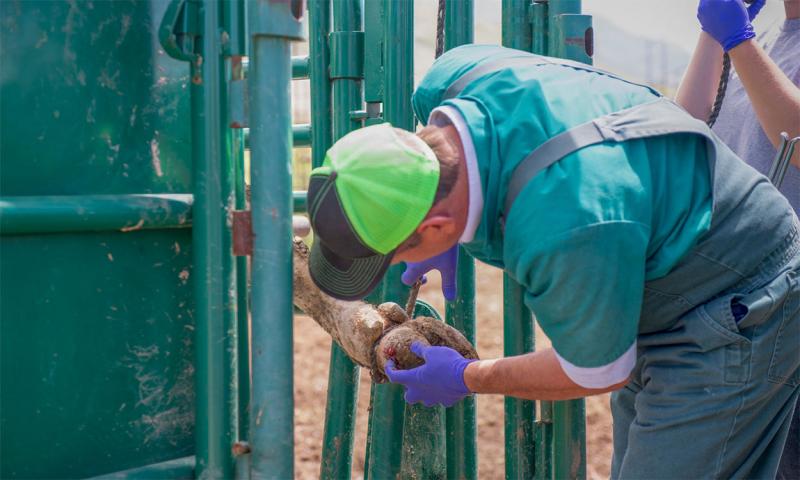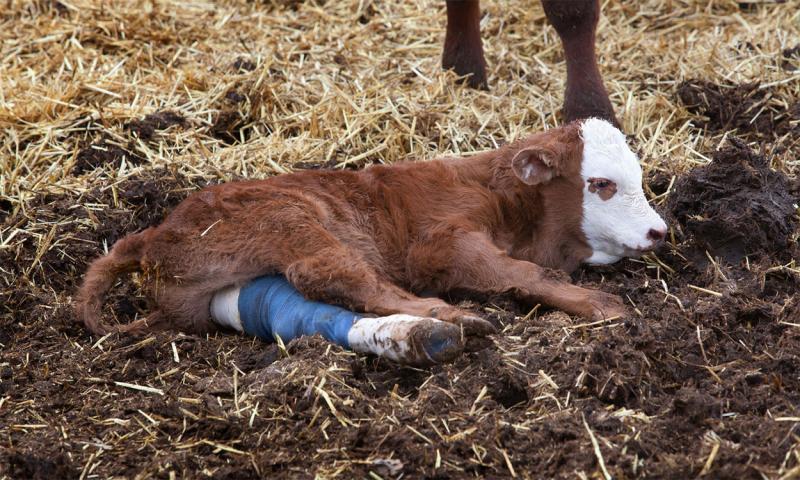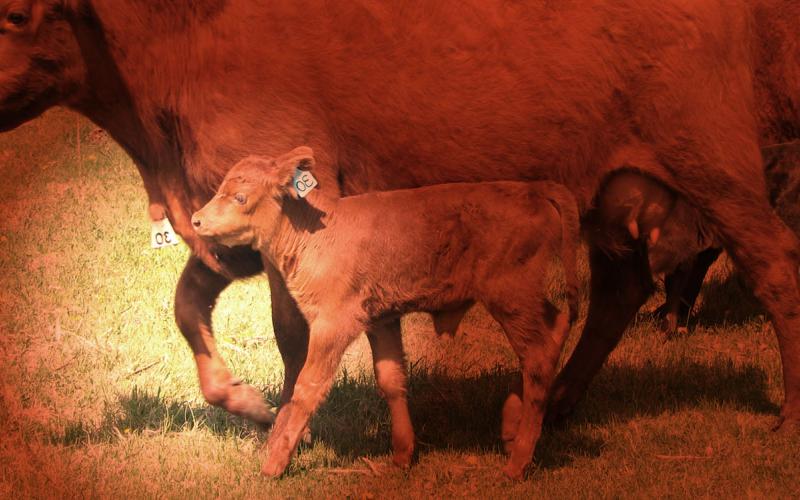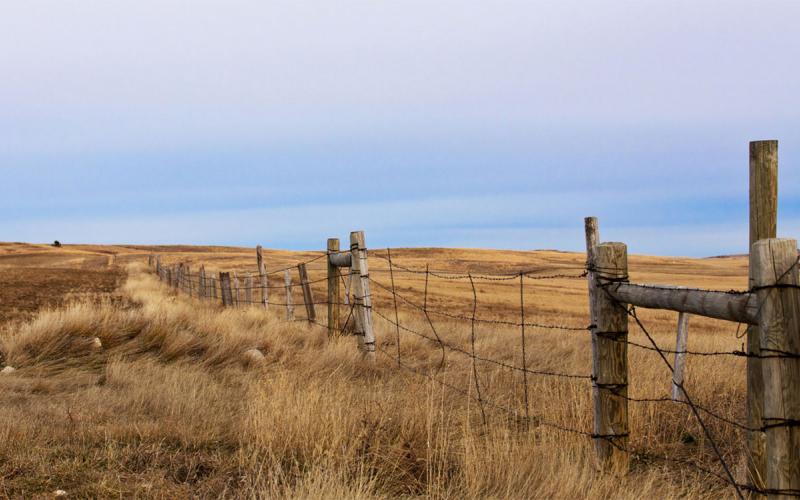The best way to help a lame cow, bull or calf is oftentimes a tricky decision for a cattle producer. Whenever possible, these decisions should be based off at least a preliminary diagnosis of the cause of lameness. Going down the wrong treatment path at best can lead to wasted time and expense, and at worst it will lead to a deterioration of the condition.
Antibiotic Treatment
Not uncommonly, the first lameness treatment idea that pops into the mind of many cattle producers involves an antibiotic injection. However, of all the causes of cattle lameness, only a couple of them respond to antibiotics. One of these conditions is footrot. Lameness that originates from the foot, with symmetrical swelling above the hoof and a foul-smelling draining sore between the toes, can be expected to respond well to injections of long-acting antibiotics, such as tetracycline.
In some cases, antibiotics are also appropriate for joint infections. Not all swollen, painful joints are due to infections, though. In addition, systemic antibiotic injections don’t always deliver sufficient levels of the drug to the joint space. For particularly valuable animals, veterinarians may choose procedures, such as intra-articular (into the joint space) injections or flushing.
For essentially every other cause of lameness, systemic antibiotics are ineffective. Therefore, an accurate diagnosis will prevent antibiotic treatments that result in unnecessary expense and extended slaughter withdrawal times. One of these non-responsive conditions is hairy heel warts. For this condition, surface treatment with topical compounds, such as tetracycline with or without bandaging is indicated.
Hoof Procedures

In order to help animals with hoof-related lameness, it’s often necessary to access the hoof for trimming or other procedures. As such, the use of a tilt table that immobilizes the animal and the limbs is usually best. When infections are present underneath the hoof wall, successful treatment consists of trimming or carving out sufficient hoof material to ensure that the infection can drain to the outside. This is the case with toe abscesses, toe ulcers and the rare vertical and horizontal cracks that have become infected. Immobilization of the animal allows the veterinarian to more-effectively work on and anesthetize the affected area.
When painful conditions affect one toe and not the other, a frequently successful intervention is that of gluing a wooden block to the unaffected toe. This relieves pain and pressure on the affected toe and allows the animal to move more freely while the infection drains and heals. The block wears off over time. In very severe chronic cases affecting only one toe, the toe may be surgically amputated. Lighter, younger animals respond to this procedure better than mature animals, and the procedure should be considered a last resort.
Other Treatment Options

For lameness cases caused by trauma (joint sprains, etc.), the only feasible treatment may be time. Lame animals, regardless of cause, should ideally be isolated from other animals and provided deep bedding (straw or sand) until they are better able to move and bear weight on the affected limb. Anti-inflammatory medications can be administered for pain relief, but they do not last for long periods of time. Veterinary input is recommended, and for some medications it is required, before using these drugs.
Fractures and severe joint dislocations in cattle are generally not conditions that can be successfully treated, and timely harvest at a local locker or euthanasia should be undertaken. Baby calves with fractures or dislocations low on the limb may be successfully treated with casts or heavy bandages. The larger the animal, the less successful fracture healing becomes. Immobilization of the joints above and below the fracture is necessary for healing. Therefore, only fractures low on the limb are candidates for casts.
Successfully treating most cases of cattle lameness usually involves more than a simple injection of antibiotics. Knowing the best intervention for a particular animal starts with a good diagnosis of the problem.


